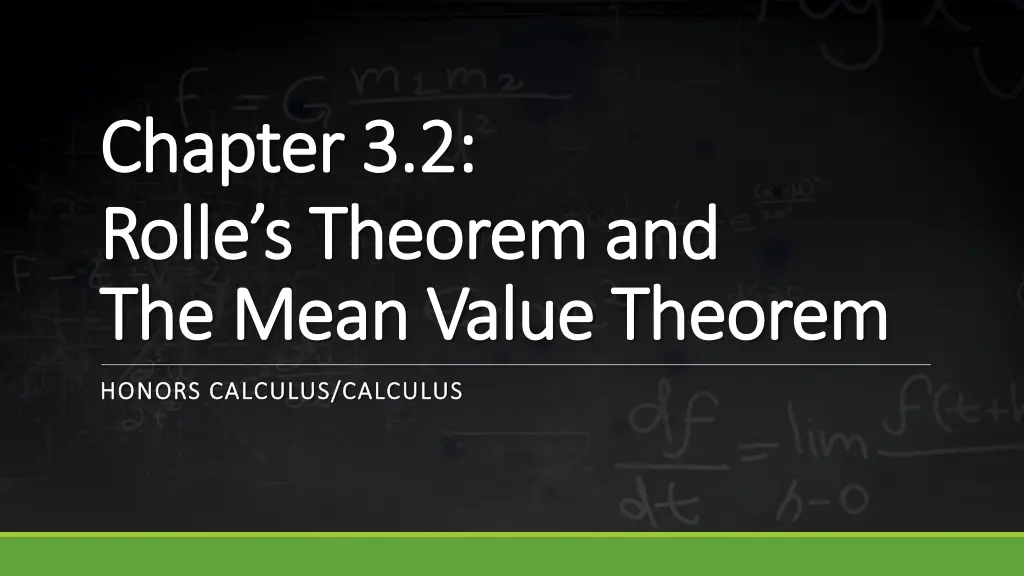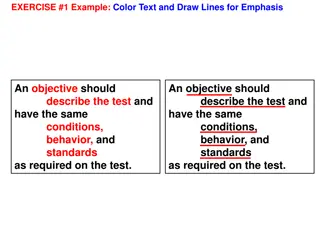
Understanding Rolle's Theorem, Mean Value Theorem, and Calculus Applications
Explore Rolle's Theorem and the Mean Value Theorem in calculus, including their applications and examples. Learn how to find x-intercepts, determine values at specific points, and understand the concepts behind these theorems. Dive into the mathematical principles that govern these fundamental calculus concepts.
Download Presentation

Please find below an Image/Link to download the presentation.
The content on the website is provided AS IS for your information and personal use only. It may not be sold, licensed, or shared on other websites without obtaining consent from the author. If you encounter any issues during the download, it is possible that the publisher has removed the file from their server.
You are allowed to download the files provided on this website for personal or commercial use, subject to the condition that they are used lawfully. All files are the property of their respective owners.
The content on the website is provided AS IS for your information and personal use only. It may not be sold, licensed, or shared on other websites without obtaining consent from the author.
E N D
Presentation Transcript
Chapter Chapter 3 3.2: Rolle s Theorem and Rolle s Theorem and The Mean Value Theorem The Mean Value Theorem .2: HONORS CALCULUS/CALCULUS HONORS CALCULUS/CALCULUS
Rolles Theorem Let f be continuous on a closed interval [a, b] and differentiable on the open interval (a, b). If ? ? = ?(?) then there is at least one number c in (a, b) such that ? ? = ?.
Ex. 1) Find the two x-intercepts of ? ? = ?? ?? + ? and show that ? ? = ? at some point between two intercepts.
Ex. 2) Let ? ? = ?? ???. Find all c in the interval (?,?) such that ? ? = ?.
The Mean Value Theorem If f is continuous on the closed interval [a, b] and differentiable on the open interval (a, b), then a number c in (a, b) such that ? ? =? ? ?(?) ? ?
Ex. 3) Given ? ? = ? ? such that the slope of the secant line is equal to the slope of the tangent line. ?, find all c in the interval (1, 4)






















